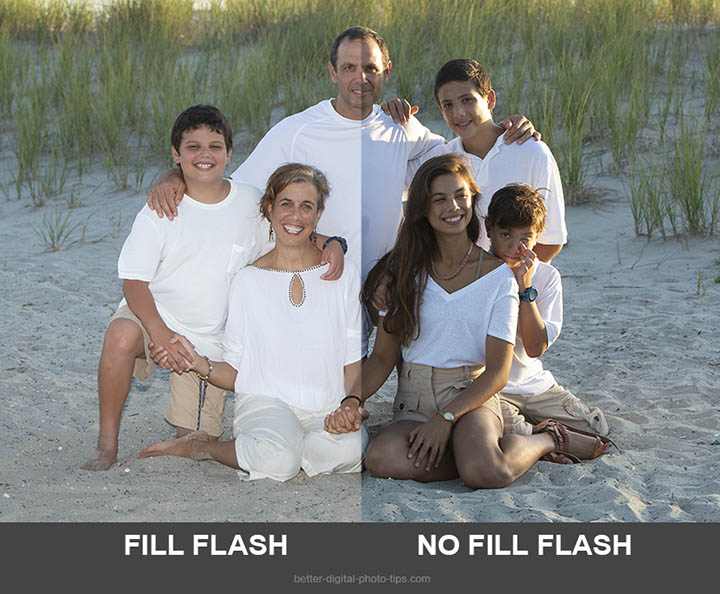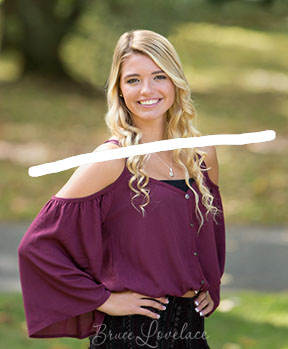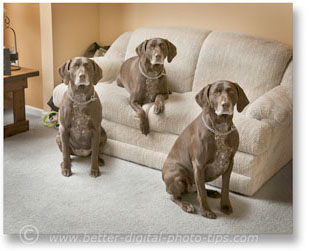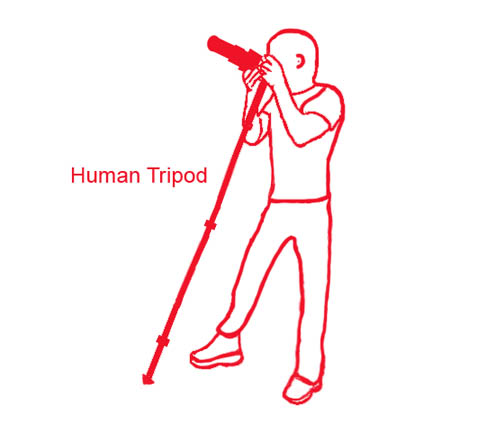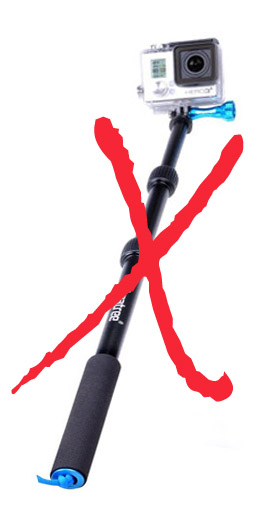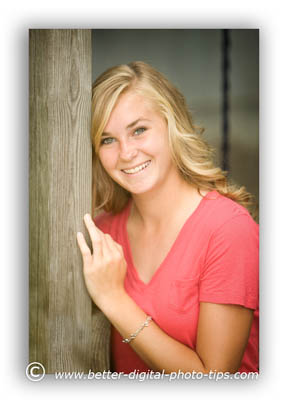HOW TO POSTS: LIGHTING AND COMPOSITION
7 portrait photography mistakes you must to avoid
Even if you're not shooting formal portraits, avoiding the common portrait photography mistakes will give you better portraits whether you're a paid professional, an advanced enthusiast, or even a newbie photographer.
Most of us have committed many photography mistakes at some time or another. It's not an UN-fixable situation because just a few simple changes can make all the difference in the world.
The secret to getting better at taking portraits is avoiding these common portrait mistakes in the first place. Editing afterwards can help, but why not get it right in the camera?
7 portrait mistakes
- Bad Portrait Lighting
- Poor Posing
- Wrong Clothing
- Distracting Background
- Exposure
- Eye Focusing
- Not Reviewing
1. portrait lighting mistakes
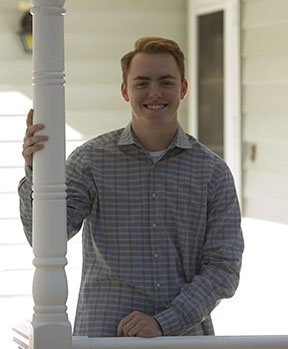 Background Lighting Too Strong
Background Lighting Too StrongBeing a self-admitted lighting geek, bad portrait lighting is one of my pet peeves. Photography is "painting with light" and portrait photography mistakes often revolve around lighting and how it portrays your human subjects.
This section of mistakes gives you 3 specific lighting situations you should avoid to increase your chances of sidestepping bad portraits due to bad lighting. They are a bright background, strong backlighting, and direct sun hitting the front of your subject.
The sun was blasting the porch area behind this high school senior. The white wall was lit brighter than my subject. Although you can use software to adjust the exposure and get a usable shot it's better to add fill light or find a better location.
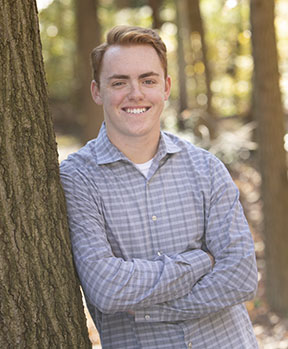 Better Lighting Location
Better Lighting LocationDon't make the mistake of failing to look at as many different angles as you can when photographing a subject on location.
We found this spot, with much better lighting only about 50 feet from the photo taken on the front porch. There was more light falling on his face from the sky in this open shade area.
The trees behind the subject provided for the darker background. Using a longer telephoto lens setting gives you a narrower angle of view and you can be more selective at shooting at an angle that will give you a darker background.
It's usually better to seek out natural, existing lighting, but let's face it, that's not always possible. Using no fill flash or reflective fill light is the biggest mistake if you can't make the existing light work. You need to add light to your subject
Whether it's the pop-up, built in camera flash or an external flash, extra lighting on your subjects' faces is often needed when the subject is backlit or the background is too bright.
Look at this comparison of using flash versus not using fill flash. In this beach photo in front of the dunes, the background behind this family of 6 is fine. The sunlight is behind them and their faces are in shadow. The flash brightens up their faces and makes for a better balance of front lighting and backlighting.
The next photo illustrates the opposite condition. It's a completely different situation when the sun is blasting your subjects from the front.
 Sun in face causes harsh shadows and squinting.
Sun in face causes harsh shadows and squinting.Direct sunlight is too harsh for portrait photography. You'll often end up with harsh, distracting shadows and subjects with squinting eyes. Avoiding this specific challenging situation is just a matter of patience.
Waiting for 15 minutes results in the lighting situation below. Once the sun dips below the horizon the light becomes "sweet," the bad lighting is gone, and your subjects looks great.
 Better lighting just after sunset.
Better lighting just after sunset.2. common photography posing mistakes
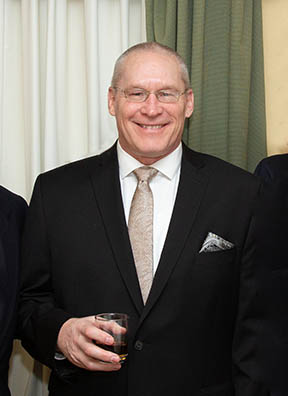 Straight at camera pose
Straight at camera poseThe most common portrait posing mistake is having your subject facing square to the camera. This is a very static pose because both shoulders are at the same height.
If the body, face and eyes of your subject are straight forward to the camera, there are no diagonals to create visual interest.
Whether it's a thin model or a full-figured person, the pose does a poor job of making the model look their best.
If you turn your subject a little, the shoulders become offset and the pose is more interesting.
Have the model's head slightly turned or slightly tilted with the eyes aimed directly back at the camera lens.
This creates an implied diagonal as well as reveals the whites of the eyes nicely.
3. portrait clothing mistakes
Okay, admittedly, there are times when you can't control the clothing that is being worn by the subjects you're photographing. Generally bad clothing makes for bad portraits. Look at the family portrait below. The client was very happy with this pose of their family of 4.
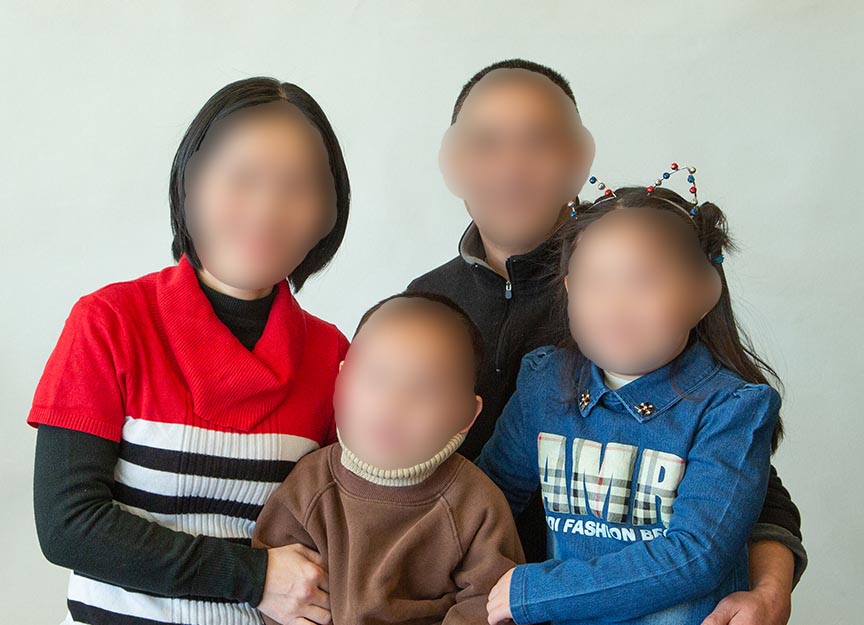
I was disappointed at the choice of clothing, but the circumstances didn't allow a change of clothing. The pose was good. The lighting was great and I set-up a solid white background to eliminate the clutter that would have shown up inside the restaurant where this photo shoot was scheduled.
Yes, wearing clothing that is bright, has bold stripes or includes wording it's a misstep to avoid if you can. Bright colors, patterns, logs, and printed words will distract you from focusing your eyes on the most important part of a portrait, the faces. Here is a complete article covering portrait clothing.
4. distracting background mistake
This is definitely one of the biggest mistakes I've committed in shooting portraits over the last 40 years. It's easy to pay attention the the lighting, the posing, and the focusing of your lens and erroneously forget to watch the background behind your subjects.
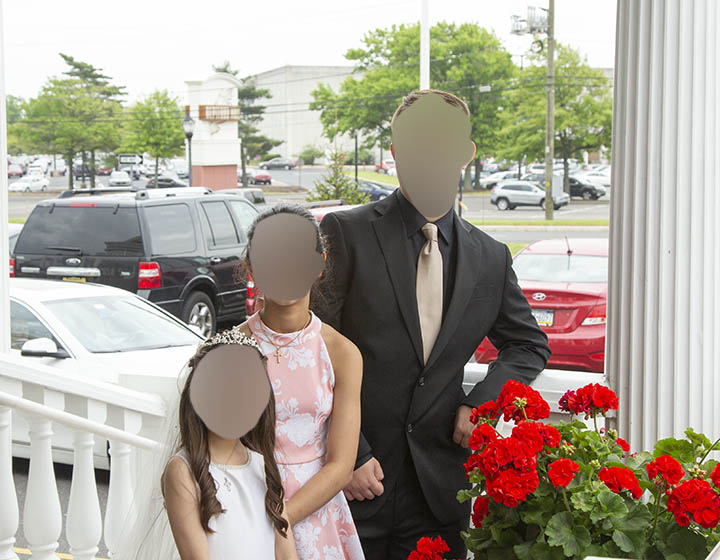 Distracting cars in background and pole coming out of head.
Distracting cars in background and pole coming out of head.It's always a great idea to choose a few different angles to shoot. Sometime just a few feet difference in the position of the camera can make a world of difference in how the background affects the pose.
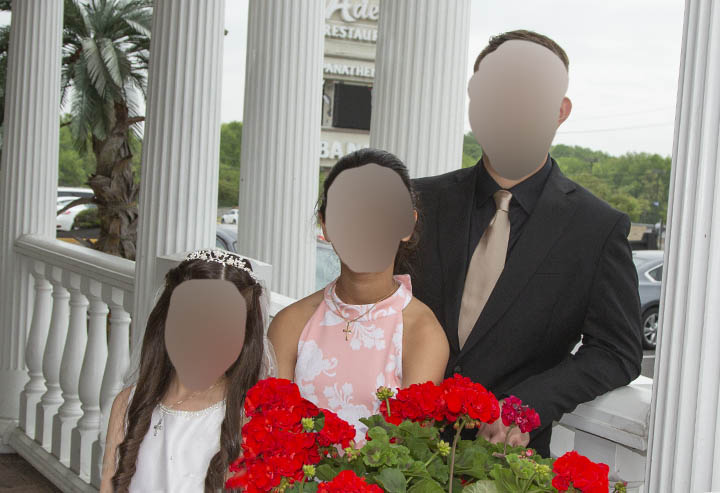 Less distracting background.
Less distracting background.You can see what a difference it makes in the background when you choose a different angle to take your shot.
5. mistaken exposure setting
With today's sophisticated auto-exposure abilities of cameras, an overall mistake in getting the exposure right is less likely. No doubt, unique lighting situations can fool even the most advanced cameras. Strong backlit scenes are the biggest culprit, but usually it's the failure of the photographer to set the camera on the right setting.
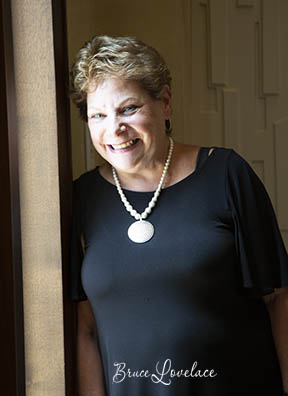 Meter fooled by the black dress
Meter fooled by the black dressOVEREXPOSURE. Dark subjects photographed against dark background can cause overexposure. Set on auto-exposure, your camera's meter reads the dark scene through the lens and adjusts one of the settings by adding too much light to compensate.
This woman's dark dress in front of a shadowed background fooled the camera and the camera adjusted the settings and too much light was allowed to enter the camera.
Although it's not grossly overexposed, the exposure is off enough to blow out the highlight details on the woman's face.
 Meter fooled by brights sky,
Meter fooled by brights sky,light reflection on sand, and light clothing
UNDEREXPOSURE. Light subjects against light background can sometimes come out underexposed. Photographing a subject dressed in white on the beach is a good example.
Because I've had lots of experience shooting under these conditions, I routinely set my exposure compensation to +1 f-stop. One f-stop is the equivalent of doubling the light.
The best way to avoid this is to make a quick glance LCD or get a basic understanding of histograms. Make a quick adjustment using your with exposure compensation setting to add or subtract exposure and shoot the photo again.
6. missed focus
 Missed focus in the dark
Missed focus in the darkNewer cameras have improved facial recognition software and are getting remarkably good at focusing on the eyes of your subject-that's great if your photo includes a person a person that's looking toward the camera.
All cameras don't have that capacity and all portrait photography doesn't always have eyes to focus on.
In this wedding photo the lens focused in between the couple on the Christmas tree in the background. It was very dark in the courtyard where this photo was taken and the lens auto-focused on the bright and contrasty lights.
7. failure to review
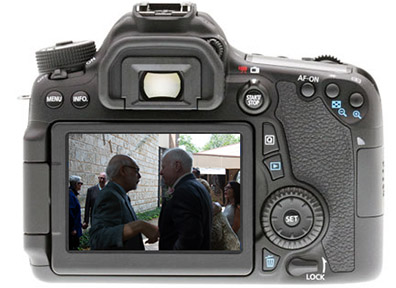 Use the LCD to check for mistakes.
Use the LCD to check for mistakes.Each time you change your location or your angle, or the lighting, take a quick look at your LCD. It's called "chimping." Insecure pro photographers worry about looking amateurish by checking the LCD screen after the image has been captured, like a chimpanzee would.
I don't care what I look like if I'm chimping. I want to make sure I've nailed the exposure of the pose. That LCD screen is technology that should be used.
You can check your LCD screen for any mistakes you make when you're shooting portraits or anything else. You'll be able to see if your camera goofed on the exposure and also how well you composed the image too.
Keep on shooting, keep learning, and keep improving your photography.


ABOUT BRUCE LOVELACE
Bruce is the publisher of this website. He is the author of the book "Improve Your Photography Instantly." Read more on Bruce on his Bio Page. He's been known as The Traveling Photographer ever since 1994. Read more about this website.
View some of Bruce's photos on Instagram. Visit the Facebook Page. Watch him on YouTube. Bruce runs photo workshops for kids and adults, and provides one-on-one photography coaching.
Digital Photography Education Location on Google My Business
